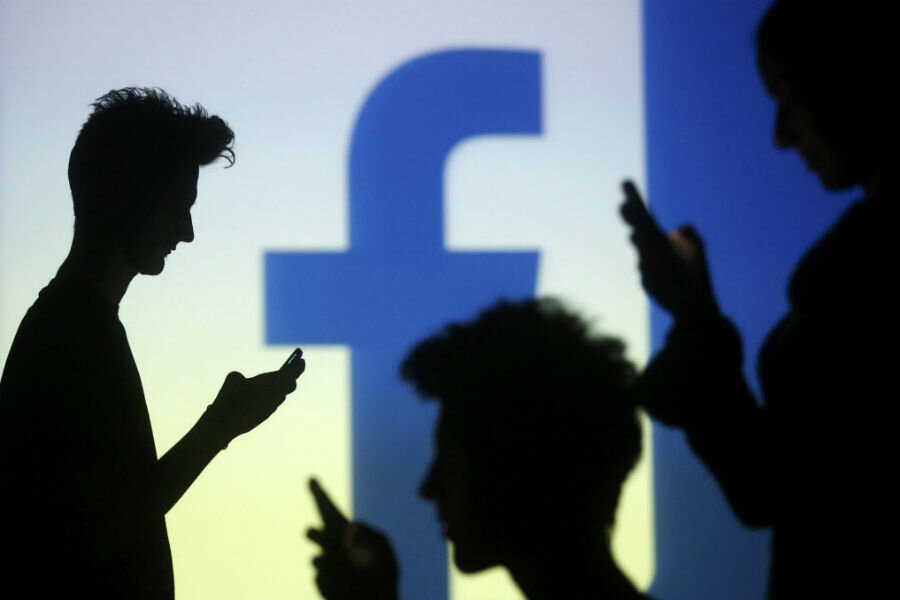Standing Rock Facebook check-ins: Slacktivism, or something more?
Loading...
North Dakota's Standing Rock Indian Reservation was virtually flooded with visitors this week, thanks to thousands of Facebookers who "checked-in" to the location to show support for those protesting the Dakota Access Pipeline.
The phenomenon began as an effort to assist protesters, as a viral status claimed that the local sheriff's department was using social media to target demonstrators – a claim the department denied. But even after Snopes had declared the rumor "unproven," the check-ins continued, with many posters explaining the move as a symbolic show of solidarity.
The Standing Rock check-ins and similar online campaigns have been denounced by some as "slacktivism," a label given to internet activism that requires little effort beyond "liking" or sharing a post on social media. Such forms of protest, critics argue, provide an easy way for social networkers to feel as though they're making a difference without taking any "real-life" action. But while hashtags or virtual locations are unlikely to have an immediate impact on the decisions of higher-ups, experts say, they can raise the profile of a movement and sometimes lead to concrete change.
The trend of checking in at Standing Rock is a "perfect example" of the way that social media "allows people to take part in protests or political activity at a distance," generating a wider sense of engagement, excitement, and "a feeling of collective identity on the part of the movement that can help make the movement stronger and then have an impact," says Jeffrey S. Juris, an associate professor of anthropology at Northeastern University in Boston.
But not everyone shares that optimistic outlook. Online campaigns such as Kony 2012, which made Ugandan warlord Joseph Kony a household name, have been written off by many as lazy and ineffective.
The Ice Bucket Challenge, the 2014 social media phenomenon in which Facebook users dared their friends to dump buckets of ice water on their heads to raise money for ALS, was decried as "narcissism masked as altruism" by Arielle Pardes, a senior editor for Vice.
"This is the crux of millennial 'hashtag activism,' where instead of actually doing something, you can just pretend like you’re doing something by posting things all over your Facebook," Ms. Pardes wrote. "Like the Ice Bucket Challenge, good causes end up being a collective of social media naval gazing."
Others, such as Zeynep Tufekci, an associate professor at the School of Information and Library Science at the University of North Carolina at Chapel Hill, have defended social-media based activism, saying it adds, rather than detracts, from causes by offering exposure to a wider audience.
"What is called commonly called slacktivism is not at all about 'slacking activists;' rather it is about non-activists taking symbolic action – often in spheres traditionally engaged only by activists or professionals," Dr. Tufekci wrote in a 2012 blog post. "Since these so-called 'slacktivists' were never activists to begin with, they are not in dereliction of their activist duties. On the contrary, they are acting, symbolically and in a small way, in a sphere that has traditionally been closed off to 'the masses' in any meaningful fashion."
Some researchers studying the effects of online campaigns have similarly concluded that participation in social media activism doesn't reduce the likelihood that one will contribute to a cause in a more meaningful way. One study by Georgetown University and Ogilvy Worldwide found that social promoters were equally as likely as non-social-promoters to donate money to a cause, but were twice as likely to volunteer their time. Another found that online activity did not take away from traditional offline participation, with its author concluding that such efforts are "at worst harmless fun and can at best help invigorate citizens."
Earlier this year, it was revealed that the Ice Bucket Challenge, criticized by Pardes and others, had in fact sponsored a key discovery in ALS research with the $115 million it generated. The effects of most social media campaigns, including the check-ins at Standing Rock, are less direct and quantifiable, Dr. Juris tells The Christian Science Monitor in a phone interview – but can nonetheless lead to change. He cites as an example the #BlackLivesMatter movement, which originated on social media and has resulted in policy changes in police departments around the country.
"It’s not necessarily a direct reflection of hashtags or even physical protests," Juris says of Black Lives Matter and similar internet movements. "It's the way these movements have shined a light on these sorts of issues, and then people start talking about them in these sorts of contexts."
In a similar way, he adds, the Standing Rock check-in phenomenon has elevated the DAPL protest into mainstream discourse and could lead to an increase in media coverage, or even motivate Facebook users to join the protest in North Dakota themselves.
The physical protesters, for their part, have expressed appreciation for the check-in trend as well, regardless of its debatable effectiveness in throwing police off the trail.
"I think what people really want to say is that they stand with Standing Rock," Standing Rock Sioux Tribe spokeswoman Sue Evans told USA Today.






